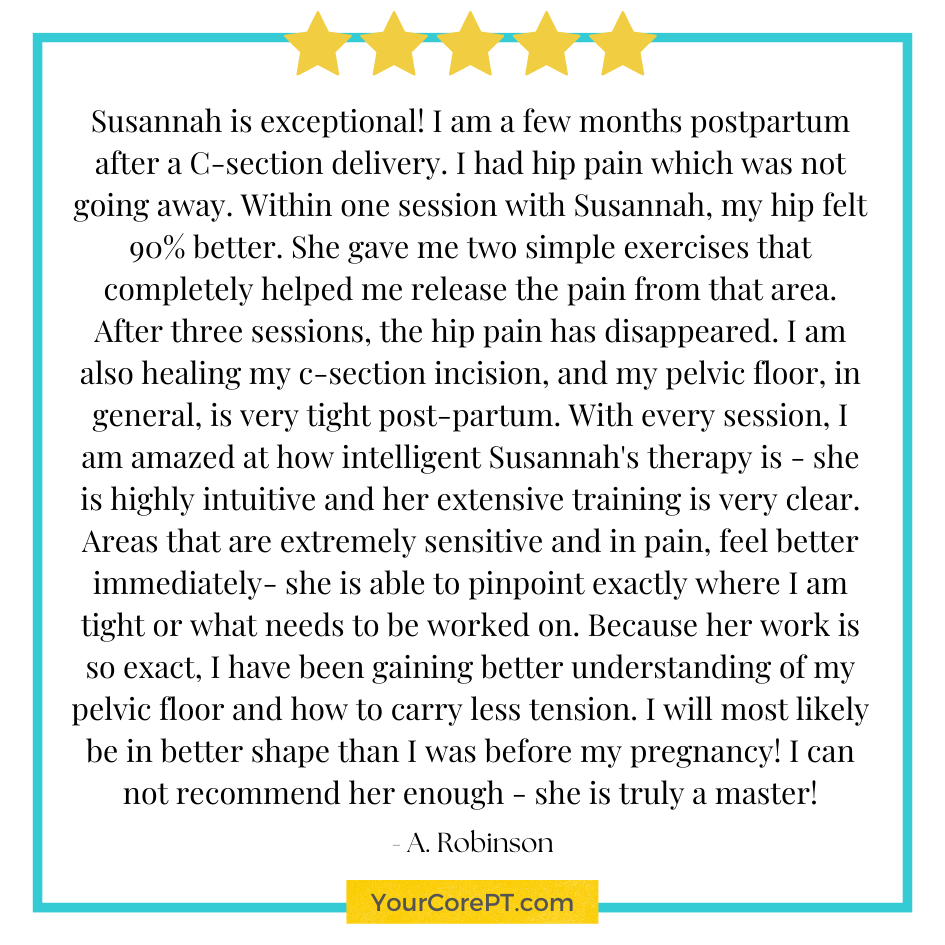Postpartum Care
While you are caring for baby, it’s important that a pelvic health practitioner is
looking out for mama.
I help women traverse the physical changes of motherhood from closing diastasis (stretching of the abdominal wall), to curing incontinence, restoring sexual pleasure, healing delivery scars, lifting internal organs & getting back to pre-pregnancy fitness levels!
Treatment for:
Neck pain with breastfeeding
Clogged milk ducts and mastitis
Urinary & fecal incontinence
Diastasis recti
Progression back to sport/exercise & more
Pelvic organ prolapse
Scars (c-section & episiotomy)
Perineal injury
Pubic symphysis dysfunction
Painful intercourse
Common postpartum FAQs:
-
This depends.
Internal pelvic floor muscle assessment can usually begin 6 weeks after delivery, but there is much more that can be done. For example, although great care is taken to protect incisions, assessment and manual therapy to assist healing after c-section, episiotomies and tears can be performed safely by a skilled provider before 6-weeks. Some women with lower extremity swelling and clogged milk ducts have benefitted from treatment within just a couple of weeks of birth. Each person’s needs are different. Please set up a 15-minute consultation if you have questions.
A postpartum visit at 6 weeks often includes, but is not limited to assessment of posture and breath, biomechanics and core stability, diastasis recti, pelvic floor muscle strength and coordination, pelvic organ prolapse, and pain generators if there are any.
Education, manual therapy, exercise, and other interventions depend upon evaluation findings and PT assessment.
-
When you come in for a postpartum assessment I assess for things like:
posture and breathing
diastasis recti
pelvic floor muscle function
pelvic organ prolapse
c-section, episiotomy scars or tears
Based upon our findings we might employ:
Manual therapy
Dry needling
Neuromuscular reeducation
Therapeutic exercise and functional movement strategies
Cold laser (LTU-904) to assist with incisional healing
Home supportive equipment and more
-
No. Consent is required prior to any internal assessment (vaginal or rectal).
The benefits of an internal assessment are the ability to palpate (touch) internal structures of the pelvic bowl (for example, assess tender points on muscle, or bony landmarks such as the coccyx (tailbone) that could be contributing to symptoms. Many pelvic floor structures can still be palpated externally and visual assessments provide important information as well.
I want the patient to honor their comfort level. Some patients want to ‘get to the bottom’ of their symptoms and are open to an internal assessment on day 1 of evaluation, while others need time to feel comfortable, or never want an internal assessment; regardless of your preference, I want you to feel comfortable and understand the treatment rationale for any intervention in my office. Your mental and physical comfort are paramount to make sure we create a safe space for patient care.
-
Absolutely!
We can modify treatment to meet your needs. I have treated mother’s while breastfeeding, practiced biomechanics with lifting baby, and more.
Some women prefer to have the hour just to themselves.
You can also invite a caregiver to come to PT treatment sessions with you.
Of course there are considerations that must be taken into account such as noise levels in the clinic (a baby with cholic may not be the best fit), and we may be able to get more done in a treatment session when mothers are able to focus solely on themselves, but bringing your baby to treatment IS an option and something we can try!



